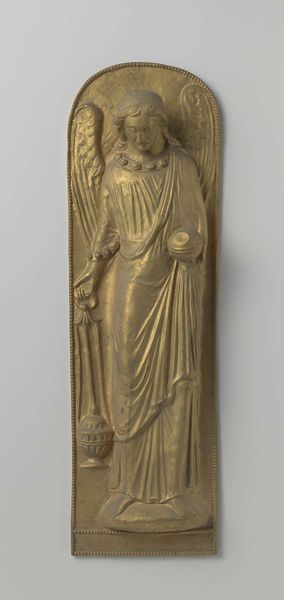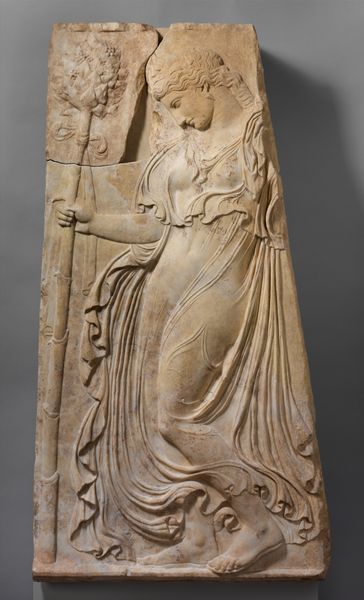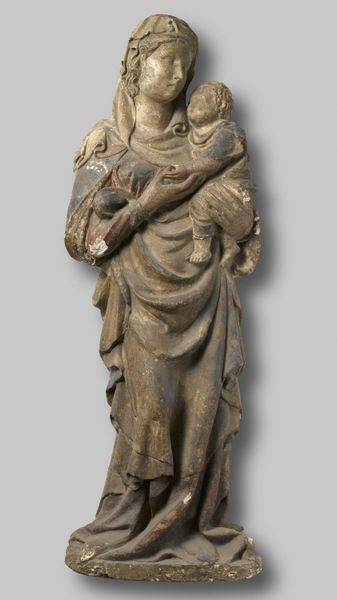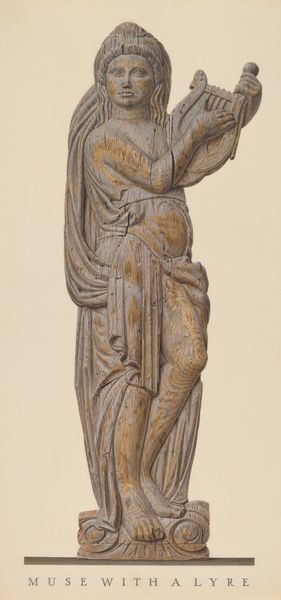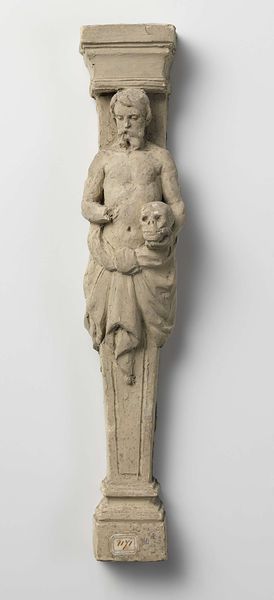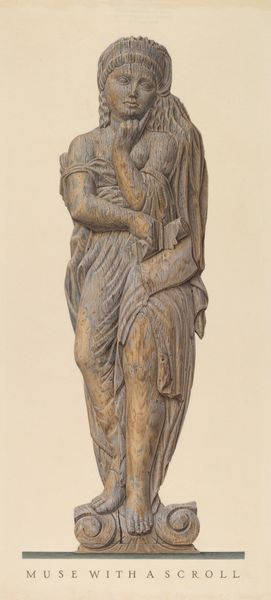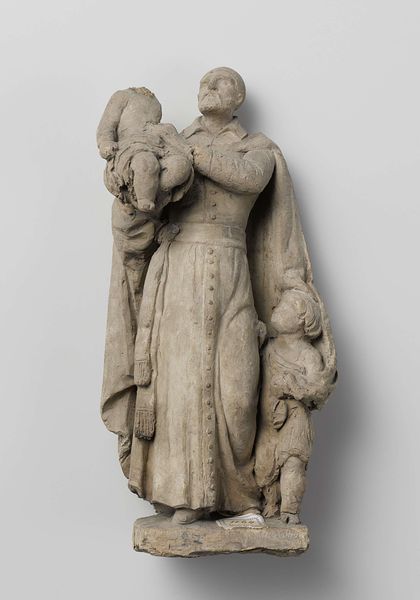
Galvanoplastische reproductie van een engel in de schat van de St. Servaas te Maastricht c. 1838 - 1881
0:00
0:00
relief, bronze, sculpture
#
medieval
#
sculpture
#
relief
#
bronze
#
figuration
#
sculpture
#
history-painting
Dimensions: height 70 cm, width 20 cm
Copyright: Rijks Museum: Open Domain
Editor: This is a galvanoplastic reproduction of an angel from the St. Servatius treasure in Maastricht, created sometime between 1838 and 1881 by F. Stoltzenberg. It's a bronze relief, quite striking in its stillness. What symbols do you find most compelling here? Curator: The angel itself is a loaded symbol. Note its lowered gaze, the wings, of course, but especially what it carries. The orb often signifies earthly power or dominion; its placement here suggests mediation between the divine and mortal realms. What of the censer, do you think? Editor: It feels like an offering, something reverent. Like a visual representation of prayer ascending. Curator: Precisely. Incense, traditionally, has served as a purification ritual, its scent carrying intentions upwards. The artist uses these layered symbols to tap into deep-seated cultural associations and memory. Do you think the piece aims to recreate or reimagine the medieval angel? Editor: I think more recreate. There's a conscious effort to revive a sense of historical reverence, looking back to the medieval period for inspiration. It speaks to a certain yearning, perhaps? Curator: It speaks volumes about the period it was created in, looking back to simpler, or supposedly, more pious times, yet filtered through a very different set of cultural anxieties and aspirations. The use of galvanoplasty itself – a new technology at the time – is also worth considering, connecting ancient themes to modernity. Editor: So much more than just a pretty angel. I am going to look for these specific attributes going forward in my own viewing experiences. Curator: Indeed. The past speaks, but through layers, symbols we continually re-interpret. The fun is discovering what the angel is actually saying.
Comments
No comments
Be the first to comment and join the conversation on the ultimate creative platform.
